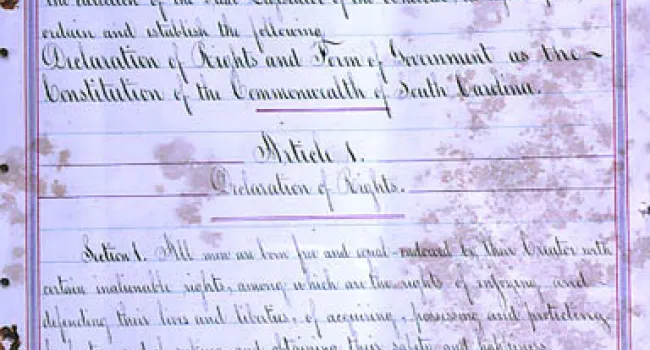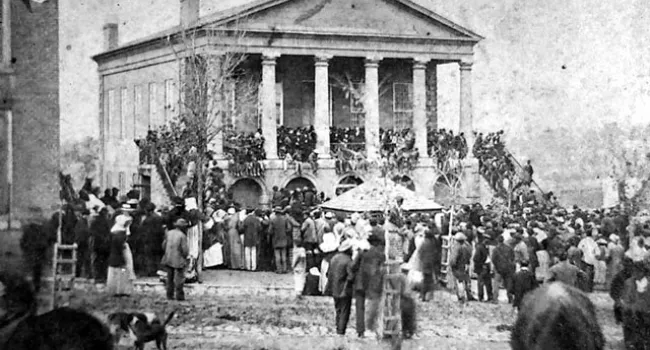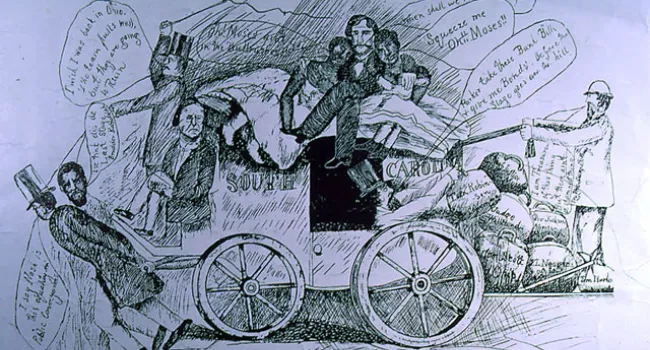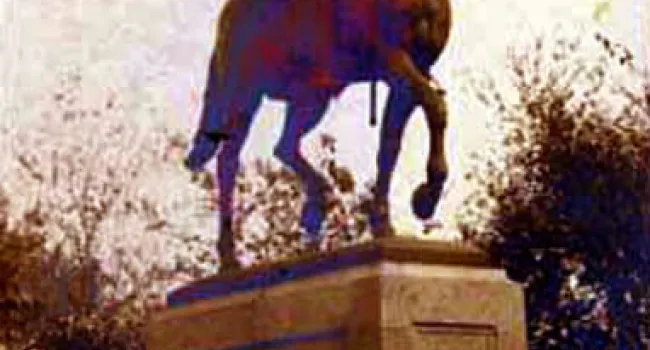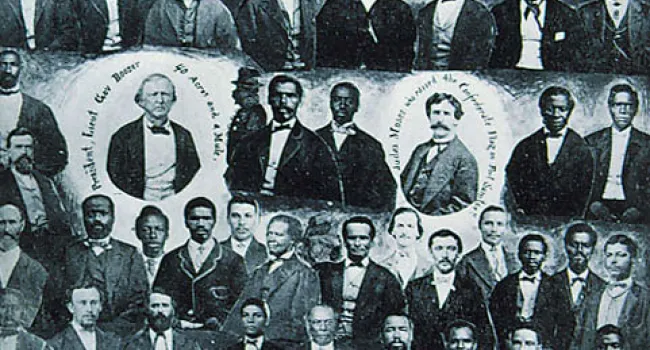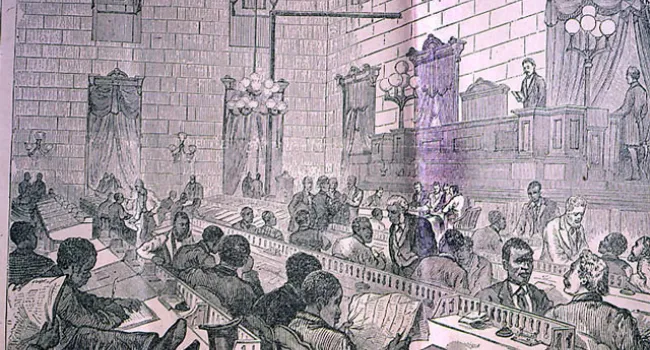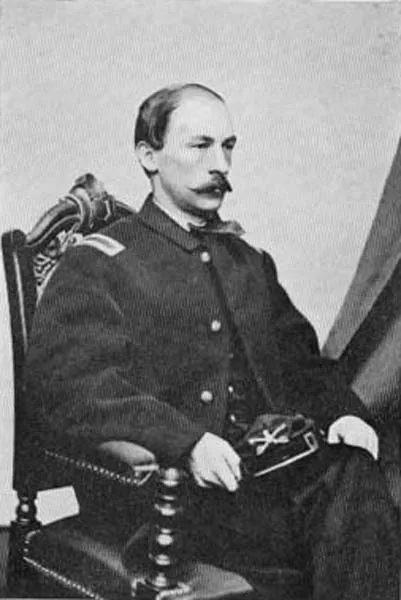
Portrait of Daniel H. Chamberlain, 1864. The events surrounding his election to the governorship in 1876 are dramatic enough to make into a movie or a television series, and can scarcely be done justice in three images. Chamberlain, educated at Yale and Harvard, came to South Carolina (as did many "carpetbaggers") as an officer in the Union army. He was an able lawyer, and when the war was over, he stayed, became involved in Republican politics, and in 1874, was elected governor as a reformer determined to clean out the corruption that had nearly destroyed South Carolina government during Radical Reconstruction. He nearly succeeded, despite enormous odds. He dismissed and pressed charges against corrupt and inefficient officials, and attempted to put the state's many business dealings on an honest basis. For a while, some Democratic Conservative opponents considered supporting Chamberlain in a "Fusionist" bipartisan effort to bring about a permanent reform of the state. They knew that they could not win elections by themselves, because Democrats were identified by African-American voters with the harsh measures of the Black Codes--and in 1870, the 289,667 white voters were outnumbered by 415,814 African-American voters. Francis W. Dawson, editor of the "Charleston News and Courier," was the leader of the "Fusionists." But in July 1876, a clash between an African-American militia company and two young white Edgefield men led to a bloody confrontation near North Augusta, known as the Hamburg Massacre. Chamberlain asked President Grant for the help of federal troops to put down disorders in the state, and Democrats decided to run a "straight-out" Democratic ticket. In an election full of fraud and corruption on both sides, the Democratic candidate Wade Hampton III promised African-Americans that, if elected, he would protect their interests, but Edgefield's fiery politician General Mart Gary and many of his Upcountry followers intimidated African-American voters to keep them away from the polls. Both sides claimed victory in the election. With the support of federal troops, Chamberlain was declared the winner at first. Engraving from "Leslie's Illustrated Weekly," December 12, 1876.
Courtesy of the South Caroliniana Library.
Standards
- 4.5.CX Contextualize the economic, labor, political, and social conditions in South Carolina during the period of Reconstruction.
- This indicator was developed to encourage inquiry into the significant causes of World War I and the factors leading to U.S. involvement. This indicator was also developed to promote inquiry into the effects of the war, to include its impact on the homefront, migration patterns, and continued foreign policy debates.
